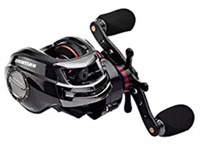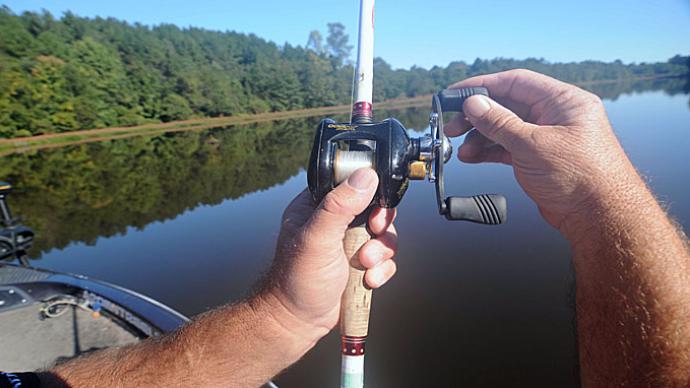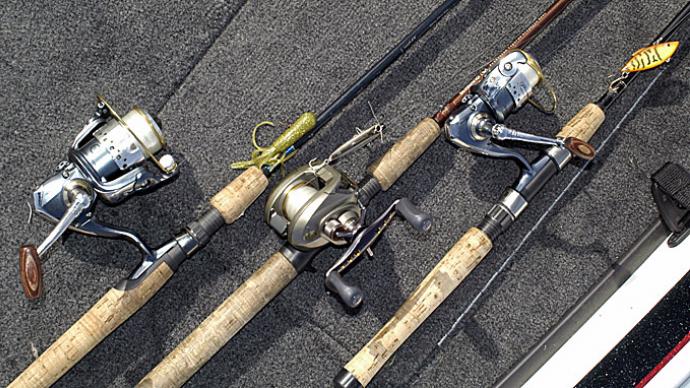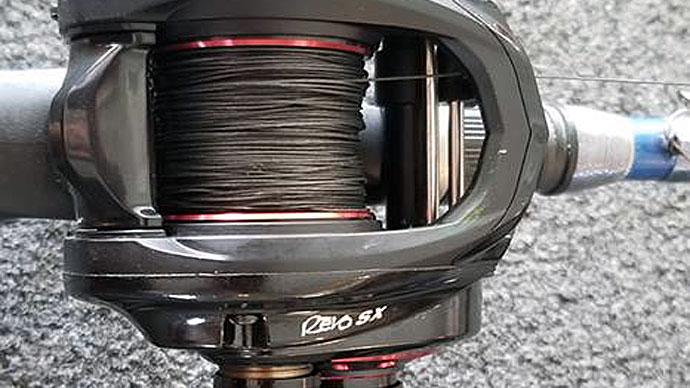
In reels, there is no “one size fits all.” Of course, using the same reel for various applications is possible, but to get the best results, using specific reels for specific techniques is the best idea. Anglers should also remember that what is “perfect” for their buddy may not be their best reel for any given technique.
For instance, I do not use a high-speed reel when cranking. I prefer a low-speed reel in most situations. If you look at the KastKing Speed Demon, it has a 10.5:1 gear ratio. When you compare that to a Ninja, for instance, at 6.4:1, you are bringing in over ten more inches of line per handle turn. While this may seem significant on the surface, you could cover a ton of water with it.— a word of caution. If you are not incredibly conscious of your retrieve speed, meaning you have to slow it down substantially, your crankbait is likely not performing how it usually would. Some crankbaits, especially if not tuned perfectly, will roll over when retrieved at a very high speed. Also, it can be tempting to use a high-speed gear ratio to get the lure down to the depth you want it at quickly. Still, at the same time, it creates an unnatural pendulum at the beginning of the cast, bringing the bait farther back to the boat than an angler might think. This limits the time the lure is at the proper depth rather than lengthening that amount of time. A reel such as the Speed Demon has definite strengths, which I will get to shortly. It has many perfect applications. Just to me, cranking is not one of them.
Using a rod and reel setup that allows for the longest possible casts is more critical. For me, 6.4:1 is about as fast as I want for a cranking reel. The Ninja or the Zephyr from KastKing are both great for this application. The Zepher has 10 pounds of drag (their Speed Demon has 18), whereas the Ninja has 16.5.
Now, for pitching and flipping techniques, that is where I want a high-speed reel. I want high speed for two reasons. First of all, when I am pitching to cover, I want to be able to make a pitch and get the lure back in quickly if I do not get a bite. That helps me to cover a lot of water when using a technique that could take a reasonable amount of time off the tournament clock.
The other reason I want the high speed is once I get a fish to bite, I want to get him out of the cover as quickly as possible. The higher IPT of these high-speed reels allows me to get the fish turned and coming toward the boat quickly, minimizing the chances of him wrapping me up around some wood or a dock near which he may have been hiding.
Drag is very important when pitching and flipping, too. The Speed Demon has 18 pounds of drag, which makes it a pretty strong choice. With a 10.5:1 gear ratio, it is a perfect pitching and flipping choice. It is also great for any application for which I am looking to quickly cover a lot of water. The MJ rig, swim baits, and sometimes even grubs will catch a lot of fish for me on an ultra-high-speed reel. With grubs, especially. This allows me to burn the bait over vegetation, for instance, and quickly stop it in a hole, allowing it to flutter down to where a fish may be waiting to ambush some prey. The Speed Demon is also great for baits such as spinnerbaits and buzzbaits. Getting these baits moving properly with a high-speed reel takes far less effort. And, at least, the vibration of these lures makes it easy to know when I may be reeling too fast. I can expend the same energy as I would when slow-rolling a spinner bait, but it will move much faster, bringing reaction bites.
The other high-speed reels I like are the Kestrel and the Bassinator. These have 8.4:1 and 8.1:1 gear ratios respectively. While they are not as fast as the Speed Demon, it was only a few short years ago when anglers were shocked at the speed of reels in this category — it was a game-changer at the time. Many times, 8.1:1 is enough, and if I get a little excited after catching a few fish and speed up my retrieve with a search bait, it is not a deal-breaker in most instances. Both of these reels are a great addition to my cache of reels. Pair either with a medium heavy flipping rod, and you have the perfect setup to get fish out of heavy cover.
There are a few techniques for which a spinning setup is much better suited. One of those is skipping docks. I know people who can skip with a baitcaster, but I have to say that the only time I did it myself was sheer luck. Skipping under docks or overhanging trees with a spinning reel is much easier to learn and do successfully. Likewise, skipping with weightless worms, to me, is best done with a spinning reel.
That being said, the reel needs to be smooth, and the drag needs to work well. I want to get the fish out before they pull me around the dock or get down into some cover under the overhanging tree.
Most spinning reels are going to have slower gear ratios than most baitcasters. That is, it will bring in less line per turn of the handle. That is not necessarily a bad thing. In drop-shotting, for example, you do not need a jaw-ripping hookset, and you do not need a high-speed reel. But, when drop-shotting four-pound smallmouth in 25 feet of water, you need a good, smooth reel that you can count on. Most spinning reels come in a 4.8:1 to 6.2:1. Those speeds are great for spinning reel applications. For the most part, I use spinning reels for finesse techniques. With these techniques – the drop shot, shakey head, and Ned rig, for instance – you do not want the bait to move a great deal. You want to be able to move it without moving it entirely away from the fish.
Spinning setups are also great for fishing small tubes. When the fish get finicky, and I must downsize my bait, I will turn to a spinning reel. Also, when the wind picks up and it gets more challenging to fish, I will put it down and pick up a spinning reel, even though I have a definite affinity for the baitcaster. Even small, light crankbaits work well on a spinning setup. And, because I use a slower gear ratio with cranking anyway, it fits my style well. The Kestrel and the Bassinator are both excellent choices for any of these applications.
Proper reel choice is imperative to a successful day on the water. We have all heard the adage of “the right tool for the right job,” which could not be more true in reel selection. Reel selection is also very personal, as I have alluded to. Some anglers prefer to crank with a high-speed reel, while others prefer a low-speed option. Some will use a spinning reel for a specific technique, while others opt for a baitcaster. The key is knowing what will work best for your style of fishing.
Beckie Gaskill is an award-winning outdoor writer, life-long avid angler and serves as a tournament director at several events in her home state of Wisconsin.




